3 smart indoor growing systems to turn your home into a greenhouse
Why you need a smart indoor growing system
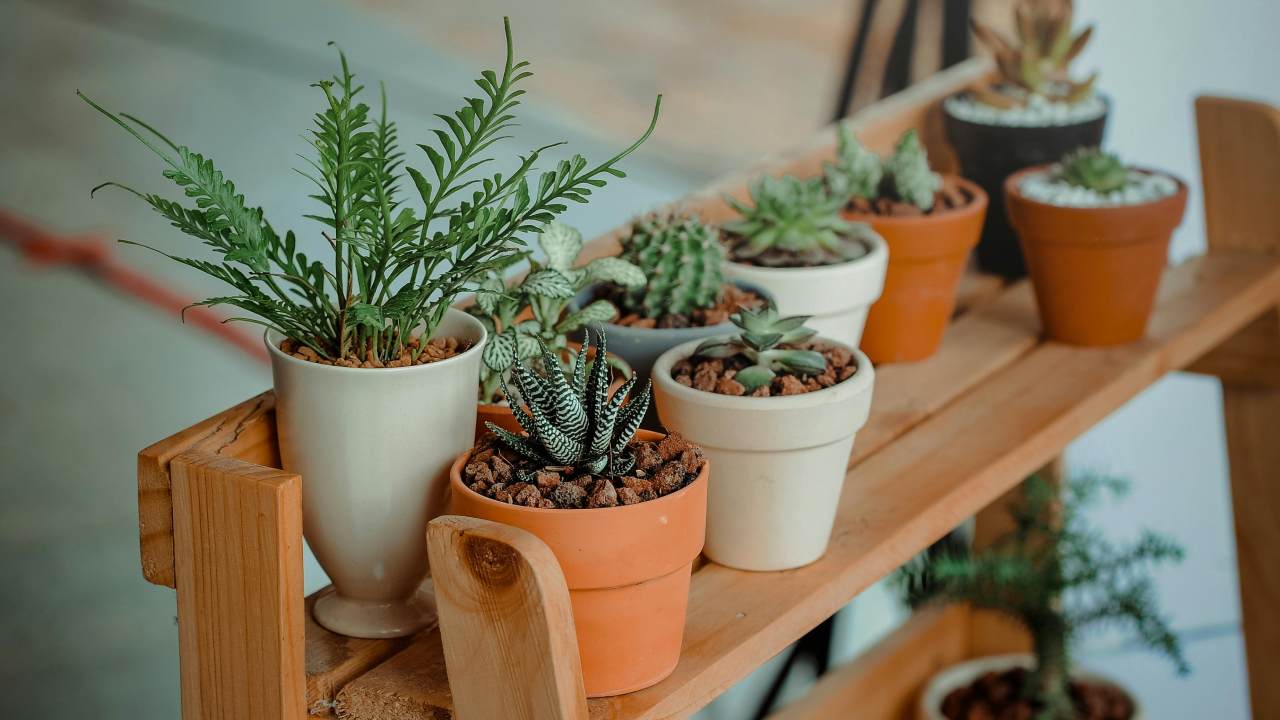

Growing your own plants and food isn’t just a healthy and sustainable alternative to buying plastic-wrapped groceries from the supermarket, it’s hugely satisfying, too. However, a lack of time, space, and unpredictable weather means it’s not always easy.
But once again, smart tech has an answer in the form of compact, self-managing indoor smart growing systems – also called smart indoor gardens.
These handy bits of kit replace the need to crowd plant pots around a convenient windowsill and are hassle-free ways of growing a wide range of luscious edible plants to eat. Plus they can provide that big splash of green foliage, which is always a pleasant sight.
They can automate watering and lighting, and as long as you’re in reach of a power source, you can position them pretty much anywhere.
Why smart indoor gardening is blooming
According to multiple studies, indoor plants can reduce stress, sharpen your attention and boost your productivity – a real boon to anyone frequently working from home. Other research suggests growing plants could improve the well-being of those suffering from depression, anxiety and dementia.
In short, having plants around the house is a very good thing indeed. Of course, the benefits of consuming sustainable, organically-grown foods is hugely appealing. You’ve grown your herbs, fruit or veg from seed, so you know precisely what you’ve added, and can be safe in the knowledge that what you’re adding to your plate hasn’t been carted around in lorries, ships or airplanes.
If you’re a keen cook, some rosemary within reach, a bunch of fresh basil, a clutch of chillies or a bushel of tomatoes can make the difference between a mediocre meal or a fantastic feast. And if, like me, you go through culinary herbs at a rate of knots, a never-ending supply means you’ll never run out.
Get all the latest news, reviews, deals and buying guides on gorgeous tech, home and active products from the T3 experts
You could do all of that in a window box or in the garden – assuming you have one – but you’re at the mercy of the weather and insects. And if you’re working long hours or have other commitments, keeping on top of your crop can become a burden.
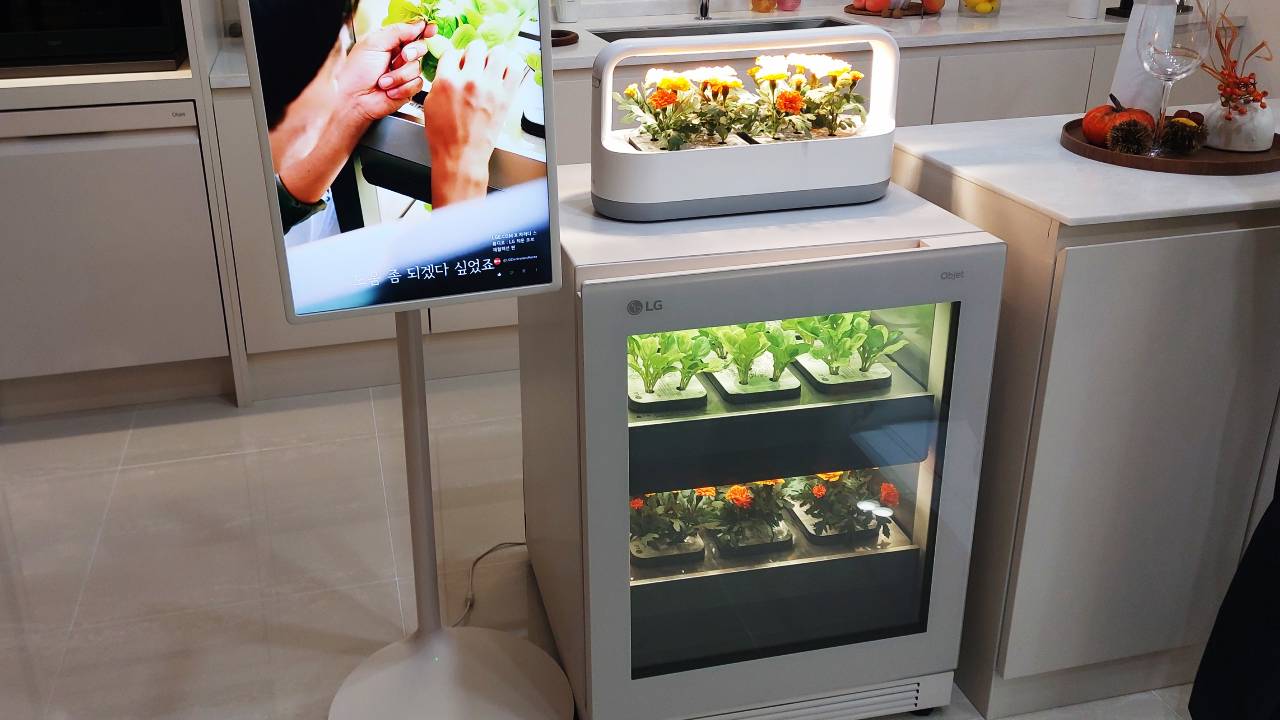
What are smart indoor gardens?
Indoor smart gardens keep things simple. You simply sew whichever seeds you want, fill up the water tank and plug in. Typically they’ll have some kind of LED-powered lighting schedule – often controlled by an app – and will distribute the water to the plants as needed.
You will need to do some things, however, such as adjust the positioning of the lights on some units, remove dead shoots and top up the water tank, but you don’t need Monty Don-level skills to have a successful harvest.
Some smart indoor gardens require you to pot in materials such as coco coir (also called coconut fibre) because it’s water retentive, making the water in the tank last longer. It’s a natural fibre extracted from the husks of coconuts, boosting its eco-appeal.
Other systems use pre-packaged pods which you simply drop in. The process is as simple as it gets – although the plastic packaging may not appeal to everyone.
Then there are smart hydroponic systems, which swap a substrate for nutrient-rich water, meaning it’s possible to grow a range of herbs, fruit and veg quickly and efficiently. Most smart indoor gardens use apps to monitor plant growth, soil humidity, and lighting schedules.
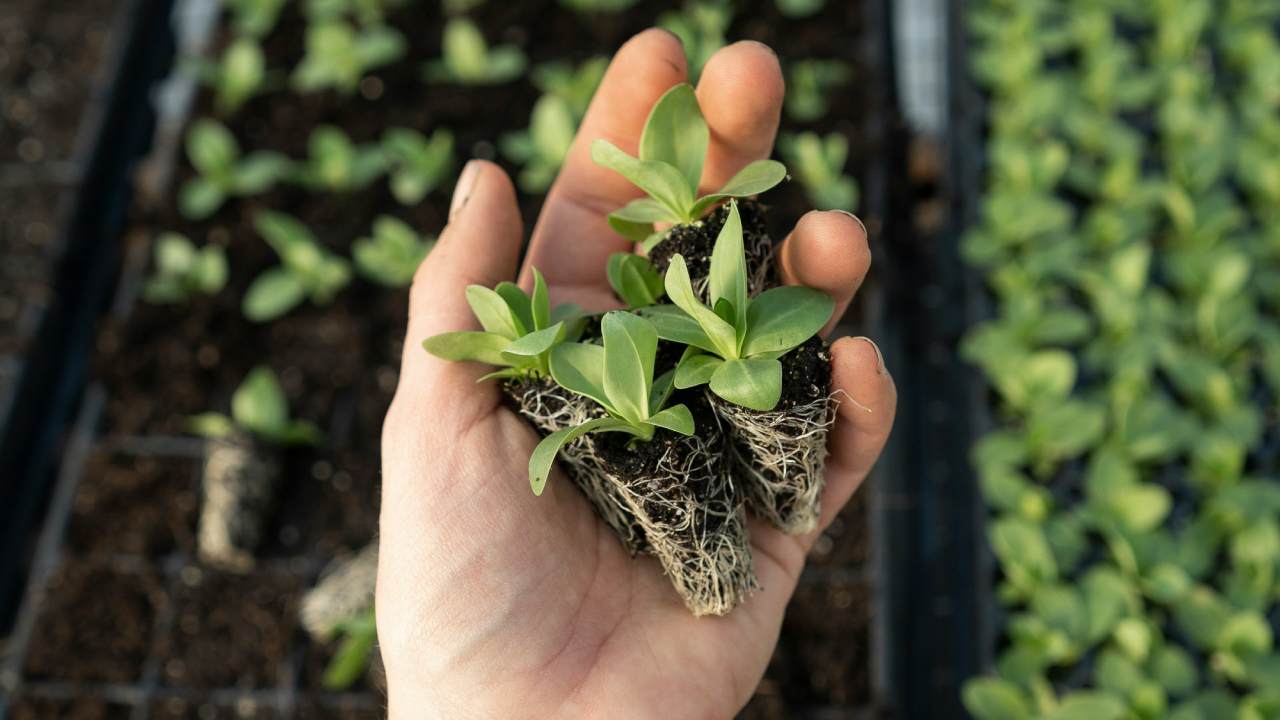
How to choose a smart indoor garden
The first thing to consider is how much space you have – and how much you want to grow. Bigger indoor smart gardening systems can allow you to grow more, but if you’re not going to use the plants, it’ll be a waste. And of course, if you only have a small space, then compact can be king,
You also need to consider where you’re going to position it. There are a range of countertop gardens on the market, which are great for tucking away in the kitchen, but vertical setups could be more space-efficient and can handle far larger quantities of crop.
Then it’s a choice between substrate (like coir) or hydroponic systems. It’s possible to grow many crops in either, but they both have advantages and disadvantages. Substrate systems are generally a little easier to use as they don’t require quite as much specialist knowledge – with some, it’s as simple as sewing, filling the tank and walking away. They deliver a more traditional gardening experience, but potting can get a little messy.
There are pod and soil systems available, too. The pods could barely be easier to use: pop the pre-sewn seeds and coir out of the container and into a cup which wicks water from a reservoir. They’re simple, but you may be restricted to a number of plants, and the small containers they grow in means it can take a while for the plants to mature. Other systems require you to fill pots with coir and sew the seeds. It’s a little more messy and time consuming, but should mean faster growth and a wider – and cheaper – availability of seeds.
Hydroponic systems allow precise control of nutrient levels, but sharing the same reservoir means it’s best to choose plants which grow at similar rates, so they don’t hog the nutrients and light leaving the slower ones behind.
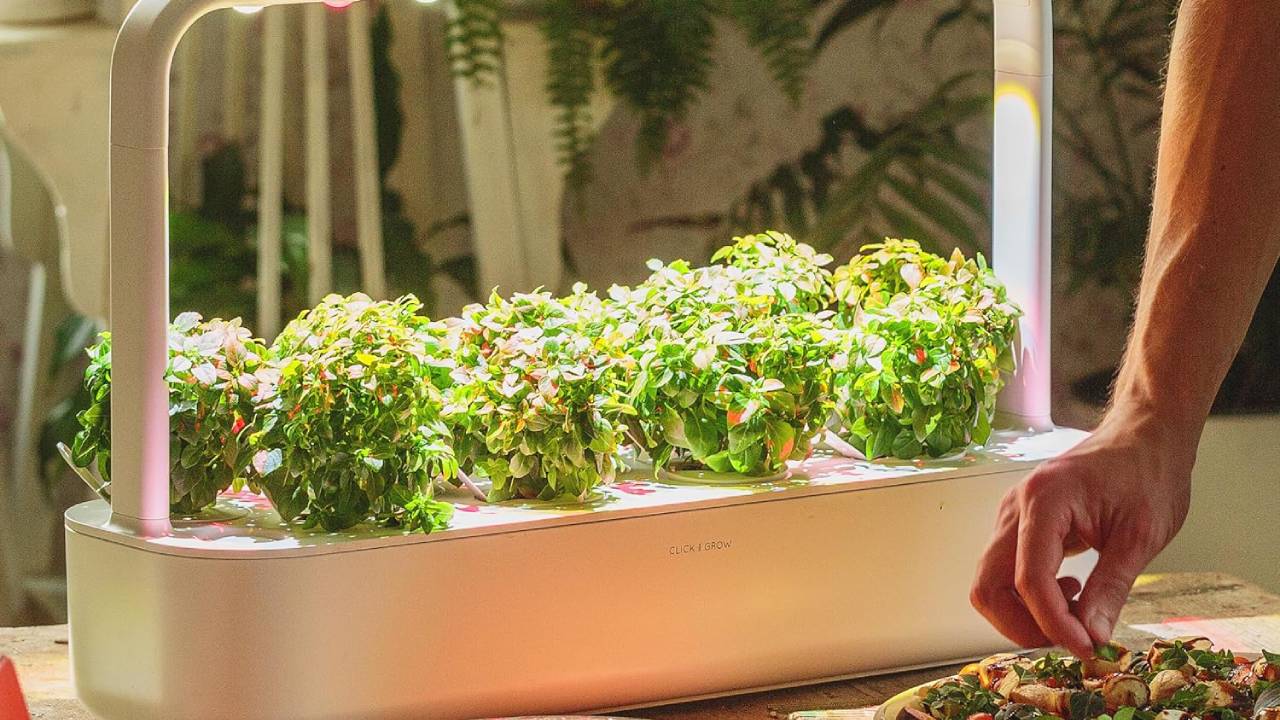
3 smart indoor growing systems to consider
We’ve already put Click and Grow to the test, with impressive and hassle-free results. You simply pop the contents of the pod into each receptacle, fill the reservoir and set your schedules via an app.
All of Click and Grow’s seeds have a growing cycle of approximately five weeks, but if you choose a smaller unit, it’s not recommended to grow a mix of plants, which limits its appeal. Unless you really like kale.
The pods themselves aren’t particularly cheap, though. At the time of writing, you’re looking at more than £3 for a pod of coriander.
Auk is another substrate system but uses coir and packets of seeds. Like Click and Grow, it has a reservoir and lighting, but unlike its rival, it uses an NFC chip to monitor the growing conditions. It’s worth noting that the chip included in the starter set is for herbs and salad; a different one for tomatoes and chillies is £13.
The Auk 1 and Auk Mini are both particularly stylish, but they score extra points because you’re not tied to Auk’s own seeds or soil – you can head to the supermarket or garden centre for a wide and cheap choice.
Idoo produces a range of cost-effective hydroponic units, but unlike the others here, the plants grow directly in the nutrient-rich water. Idoo claims reduced growing times through a highly adjustable range of growth settings, and you can alter the height of the full-spectrum LED lights, too.
If there’s a drawback, it’s that the units look more ‘lab’ than ‘living room’, but they weigh in at less than half the price. Idoo doesn’t supply seeds or nutrients, but they’re a click away on Amazon.
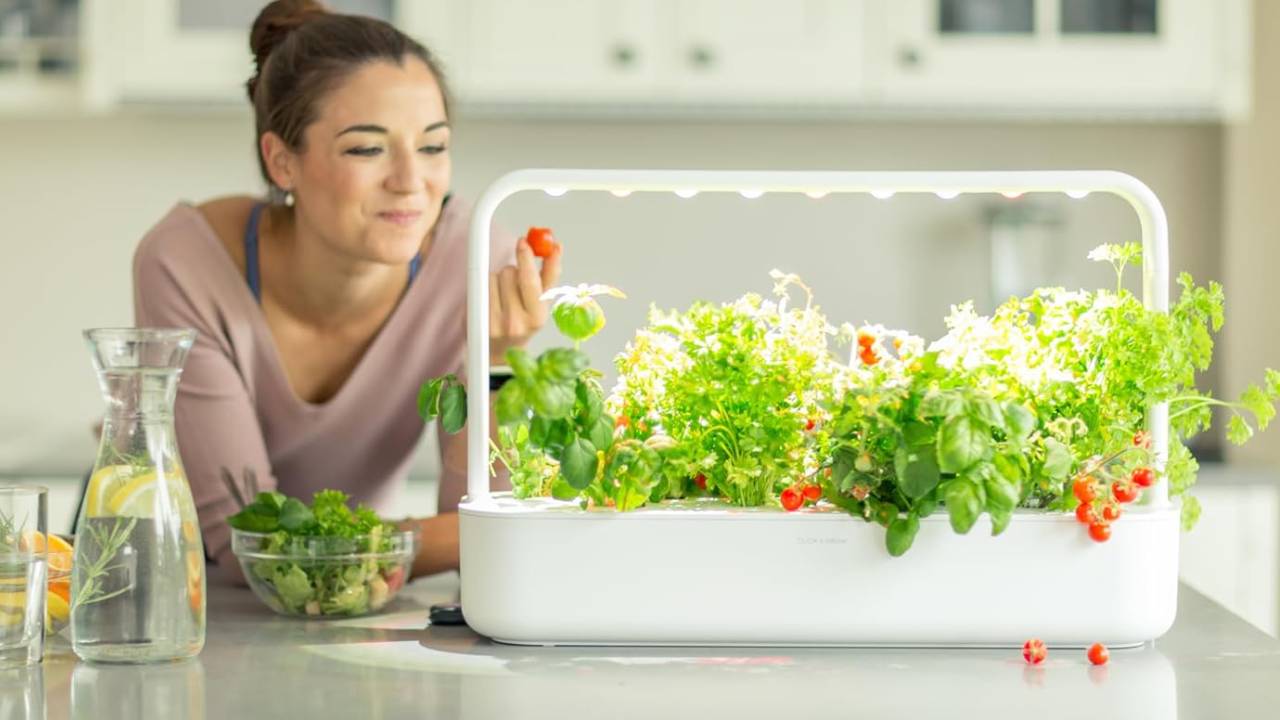
Are indoor smart gardens worth it?
There’s no doubt that indoor smart gardens have huge appeal for anyone looking for fresh, homegrown herbs, fruit and veg – especially if you lack the all-important green fingers.
They do have drawbacks: the compact nature of many of them means you need to choose your crops carefully, and they still need a bit of human interaction to harvest and remove dead shoots. Plus, in most cases, you’ll need to adjust the lights manually.
But they’re great for homes of any size, especially if you lack any meaningful – or sunlit – outdoor space. And their portability makes them ideal for renters, too.
Stuart is a highly experienced journalist with a track record at some of the UK’s most prestigious automotive titles, including What Car?, Autocar and Auto Trader. On the way, he’s reviewed pretty much every important car on the road – and is equally adept at understanding a wide range of related products, from cool boxes to digital multimeters. When not behind the wheel, Stuart has a huge interest in home improvement, and loves nothing more than spending the weekend on the tools. His latest project is fettling a workshop to house his growing passion for woodworking.
You must confirm your public display name before commenting
Please logout and then login again, you will then be prompted to enter your display name.
